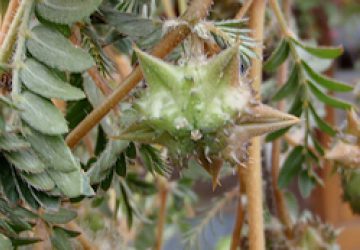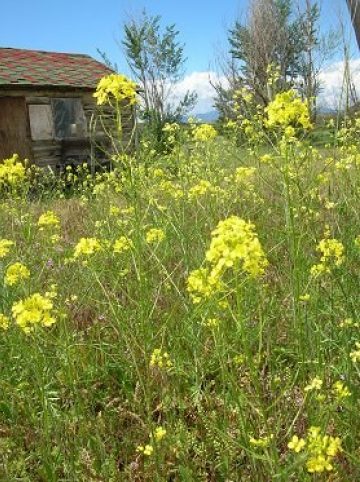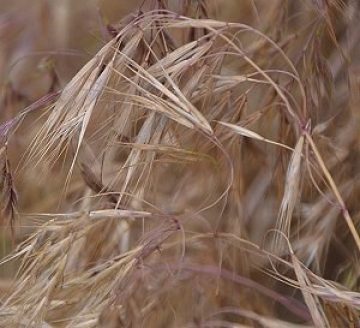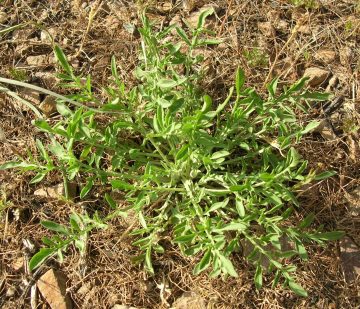What does that word mean? Weed terminology
Annual
Plants that go through their entire life cycle from seed
to flower to seed within one year or less. All roots, stems and leaves
of the plant die annually, and the next year’s plants are grown from
seeds that have overwintered in the ground. Some annual weeds, like
Cheatgrass, can complete their life cycle in as little as a month.
Annual weeds produce copies amounts of seeds and can colonize large
areas quickly, but small patches are easily controlled by hoeing or
hand pulling due to shallow root systems.
Awn
The slender bristles on the end of grass “flowers.”
When weedy grasses dry out the flowers have become seeds and the small,
sharp awn is what the plant uses to hitch a ride (think cheatgrass
seeds in your socks). Many awns are barbed and meant to act like
one-way drills, presumably into soil, but they can be dangerous
infection-causing problems for dogs and livestock.
Basal Rosette
A radiating cluster of leaves, at ground-level, on a plant’s central stem where it transitions to a root.
Biennial
Complete their life cycle in two years. The first year,
they establish a deep root system and a small basal rosette; the second
year, they grow up, flower, produce seeds, then die. The best
control for biennial weeds is hand pulling during the second year
because the stem gives you leverage on the deep taproot.
Biocontrol (Biological Agent)
The intentional use of living organisms (insects) to try
to suppress the population of a pest (noxious weeds). The insects are
natural enemies from a specific weed’s native ecosystem (usually
Europe or Asia). The insects are tested extensively before being
certified as biological agents. Biological agents are alternatives to
herbicide but they are a long-term method for weed management as they
may not overwinter, and will not eradicate the targeted weed’s
population because they depend on the weed for their life cycle. See
the Regional Biocontrol Project for more information.
Herbaceous
A plant whose above-ground parts die completely each
year. No “woody” stem or fragments from the previous year can be found
the next year. Herbaceous plants may be annuals, biennials or
perennials.
Perennial
Plants that persist for many growing seasons. Perennial
weeds grow from extensive roots systems as well as from seed. The
above-ground portion of the plant dies back each winter and new growth
comes up each spring from the same root system. Because roots
regenerate after disturbances, perennials are more difficult to
eradicate than annuals or biennials.
Rhizomatous
A plant with rhizomes, which are underground horizontal
roots that have spurs or side-roots spreading out and down as well as
new shoots going up. Rhizomatous roots are creeping or spreading root
systems, commonly found in perennial plants, that are able to generate
new plants from pieces of roots, such as when they are cut with a
shovel or tiller. Weeds with rhizomatous roots, such as quackgrass,
whitetop or baby’s breath are difficult to eradicate.
Surfactant
Compounds that lower the surface tension of a liquid.
In the case of weed control, the word surfactant refers to a soluble
compound that is added to herbicide to help the herbicide “stick” to
weeds, otherwise the spray could just run off. Some herbicides
already contain a surfactant and some specifically tell you to mix one
in before you spray. There are many types of surfactants, and they are
often called stickers.
Taproot
A relatively large root that goes straight down. Small,
minor roots may come off the taproot, but the taproot is the primary
root of the plant. A plant with a taproot would have an opposite root
system from one with rhizomatous roots. Weeds with taproots can be
easy to hand pull if they produce a firm above-ground stem, such as
knapweed, salsify or mullein, as the stem gives you leverage on the
root. However, not all weeds with taproots produce hardy stems (think
dandelions).



